Argoverse 2 API has been released! Check out our NeurIPS 2021 Datasets and Benchmarks publication to learn more about the datasets.
Argoverse API
Official GitHub repository for Argoverse dataset
Table of Contents
If you have any questions, feel free to open a GitHub issue describing the problem.
- Installation
- Usage
- Demo
- Baselines
- Contributing
- Disclaimer
- License
- Open-Source Libraries Using Argoverse
Installation
- Linux
- MacOS
1) Clone
- Clone this repo to your local machine using:
git clone https://github.com/argoai/argoverse-api.git
2) Download HD map data
- Download
hd_maps.tar.gzfrom our website and extract into the root directory of the repo. Your directory structure should look something like this:
argodataset
└── argoverse
└── data_loading
└── evaluation
└── map_representation
└── utils
└── visualization
└── map_files
└── license
...
3) Download Argoverse-Tracking and Argoverse-Forecasting
We provide both the full dataset and the sample version of the dataset for testing purposes. Head to our website to see the download option.
Argoverse-Tracking provides track annotations, egovehicle poses, and undistorted, raw data from camera (@30hz) and lidar sensors (@10hz) as well as two stereo cameras (@5hz). We've released a total 113 scenes/logs, separated into 65 logs for training, 24 logs for validating, and 24 logs for testing. We've separated training data into smaller files to make it easier to download, but you should extract them all into one folder. We also provide sample data (1 log) in
tracking_sample.tar.gz.Argoverse-Forecasting contains 327790 sequences of interesting scenarios. Each sequence follows the trajectory of the main agent for 5 seconds, while keeping track of all other actors (e.g car, pedestrian). We've separated them into 208272 training sequences, 40127 validation sequences, and 79391 test sequences. We also provide sample data (5 sequences) in
forecasting_sample.tar.gz.
Note that you need to download HD map data (and extract them into project root folder) for the API to function properly. You can selectively download either Argoverse-Tracking or Argoverse-Forecasting or both, depending on what type of data you need. The data can be extracted to any location in your local machine.
4) Install argoverse package
argoversecan be installed as a python package usingpip install -e /path_to_root_directory_of_the_repo/
Make sure that you can run python -c "import argoverse" in python, and you are good to go!
(optional) Install mayavi
- Some visualizations may require
mayavi. See instructions on how to install Mayavi here.
(optional) Install ffmpeg
- Some visualizations may require
ffmpeg. See instructions on how to install ffmpeg here.
(optional) Stereo tutorial dependencies
You will need to install three dependencies to run the stereo tutorial:
(optional) Remake the object-oriented label folders
The
track_labels_amodalfolders contains object-oriented labels (in contrast to per-frame labels inper_sweep_annotations_amodalfolders. Run following script to remaketrack_labels_amodalfolders and fix existing issues:python3 argoverse/utils/make_track_label_folders.py argoverse-tracking/train/ python3 argoverse/utils/make_track_label_folders.py argoverse-tracking/val/
Usage
The Argoverse API provides useful functionality to interact with the 3 main components of our dataset: the HD Map, the Argoverse Tracking Dataset and the Argoverse Forecasting Dataset.
from argoverse.map_representation.map_api import ArgoverseMap
from argoverse.data_loading.argoverse_tracking_loader import ArgoverseTrackingLoader
from argoverse.data_loading.argoverse_forecasting_loader import ArgoverseForecastingLoader
avm = ArgoverseMap()
argoverse_tracker_loader = ArgoverseTrackingLoader('argoverse-tracking/') #simply change to your local path of the data
argoverse_forecasting_loader = ArgoverseForecastingLoader('argoverse-forecasting/') #simply change to your local path of the data
API documentation is available here. We recommend you get started by working through the demo tutorials below.
Demo
To make it easier to use our API, we provide demo tutorials in the form of Jupyter Notebooks.
To run them, you'll need to first install Jupyter Notebook pip install jupyter. Then navigate to the repo directory and open a server with jupyter notebook. When you run the command, it will open your browser automatically. If you lose the page, you can click on the link in your terminal to re-open the Jupyter notebook.
Once it's running, just navigate to the demo_usage folder and open any tutorial! Note that to use the tracking and forecasting tutorials, you'll need to download the tracking and forecasting sample data from our website and extract the folders into the root of the repo.
Argoverse Map Tutorial
Argoverse-Tracking Tutorial
Argoverse-Forecasting Tutorial
Rendering birds-eye-view
Run the following script to render cuboids from a birds-eye-view on the map.
$ python visualize_30hz_benchmark_data_on_map.py --dataset_dir <path/to/logs> --log_id <id of the specific log> --experiment_prefix <prefix of the output directory>
For example, the path to the logs might be argoverse-tracking/train4 and the log id might be 2bc6a872-9979-3493-82eb-fb55407473c9. This script will write to <experiment prefix>_per_log_viz/<log id> in the current working directory with images that look like the following:
It will also generate a video visualization at <experiment prefix>_per_log_viz/<log id>_lidar_roi_nonground.mp4
Rendering cuboids on images
Run the following script to render cuboids on images.
$ python cuboids_to_bboxes.py --dataset-dir <path/to/logs> --log-ids <id of specific log> --experiment-prefix <prefix for output directory>
This script can process multiple logs if desired. They can be passed as a comma separated list to --log-ids. Images will b















































